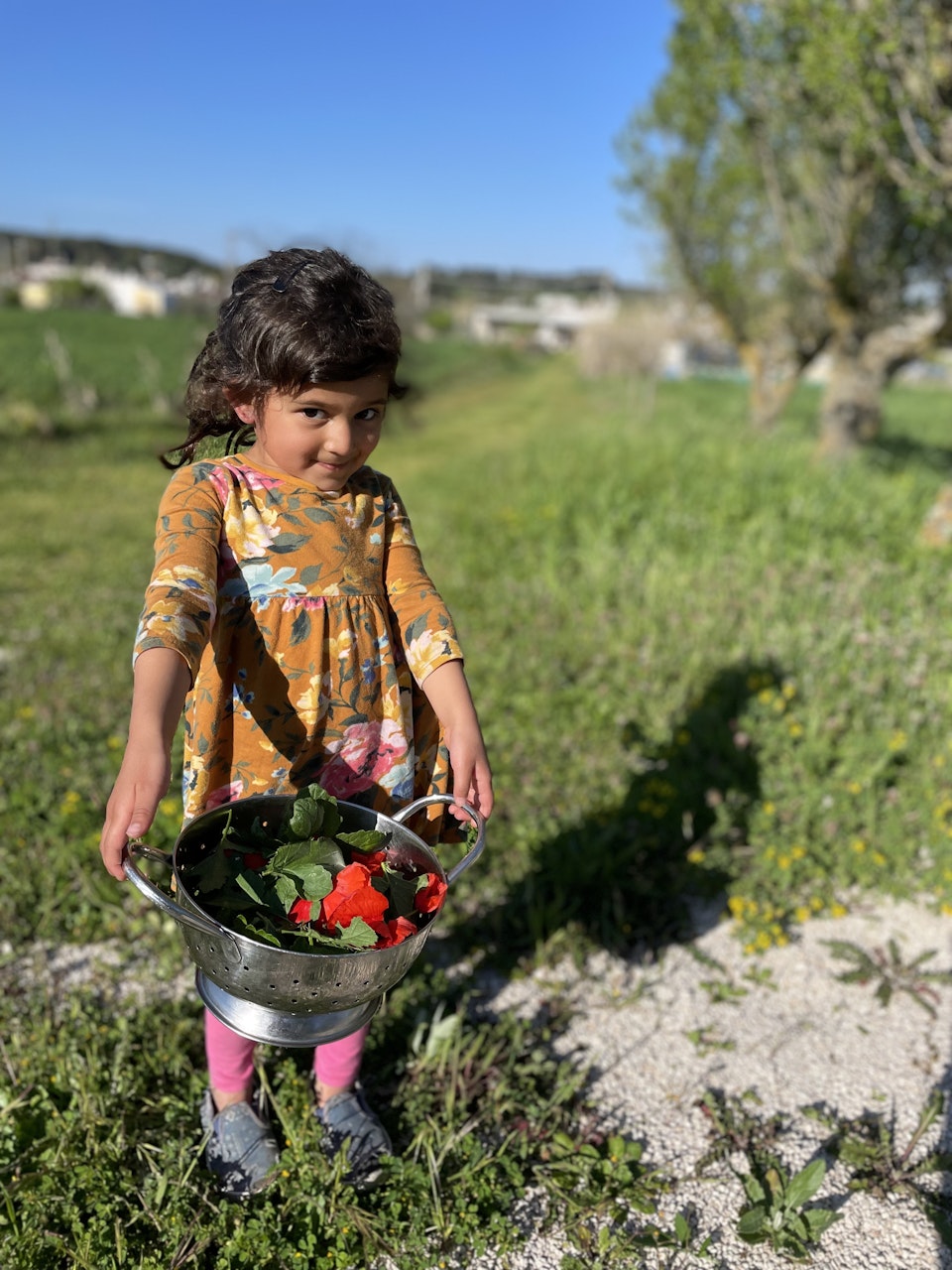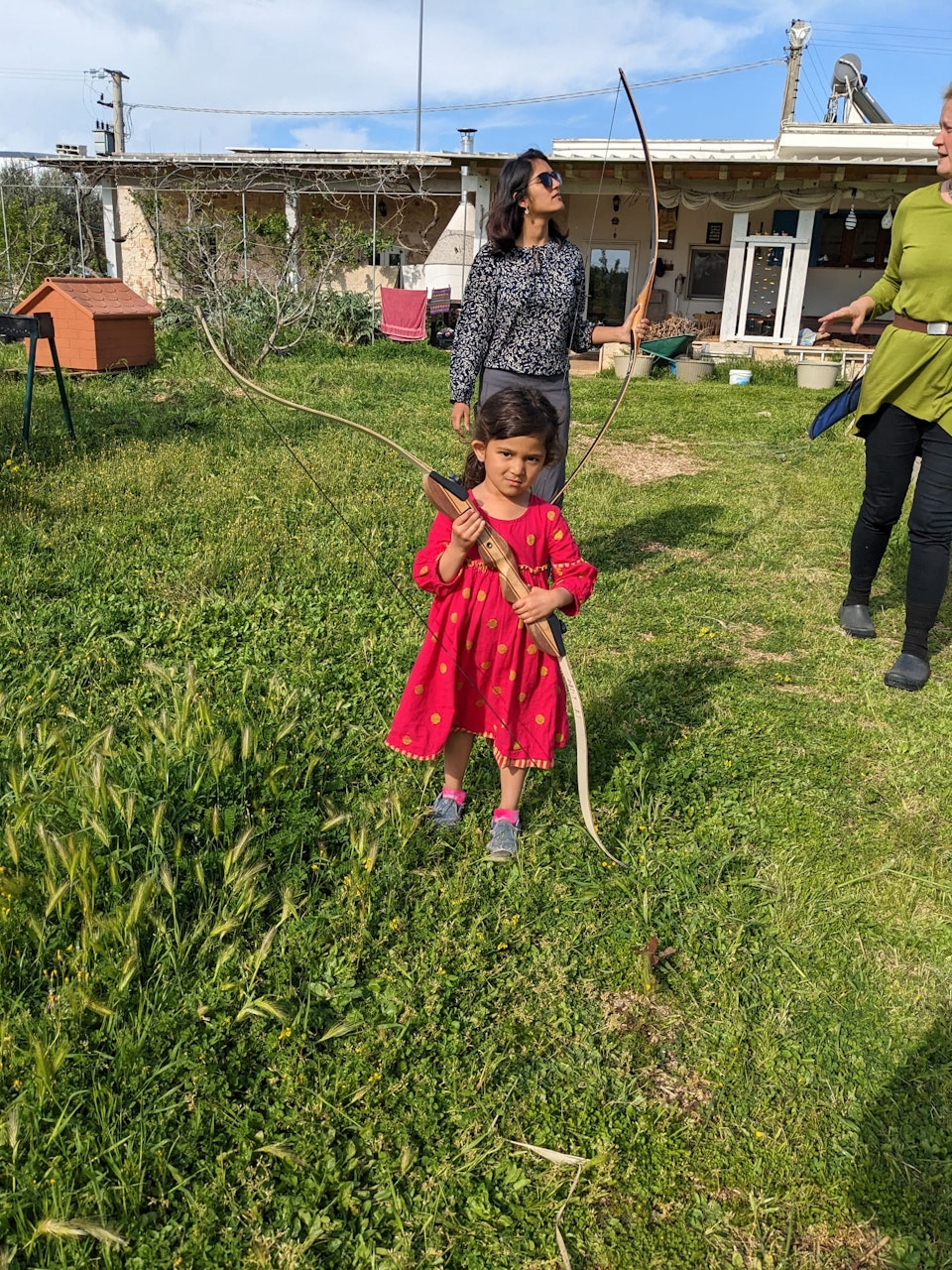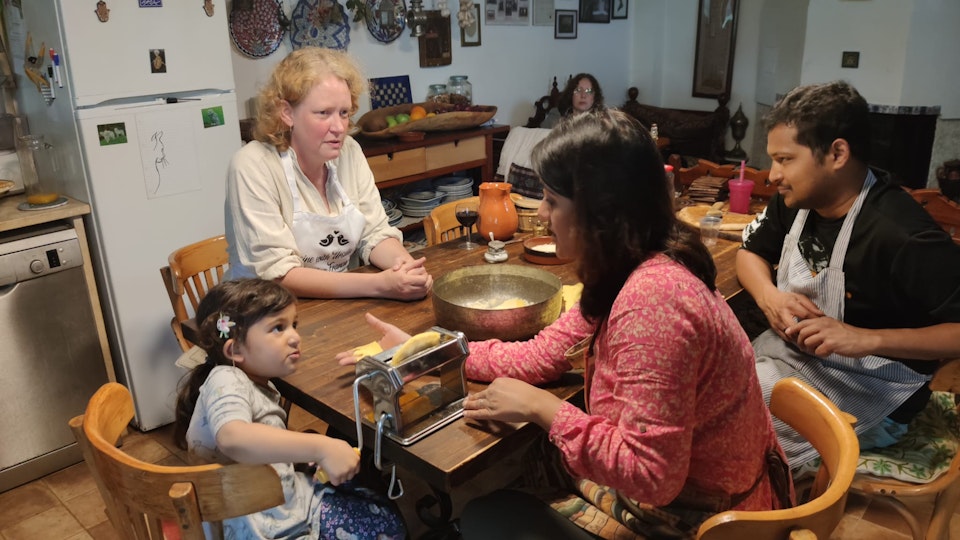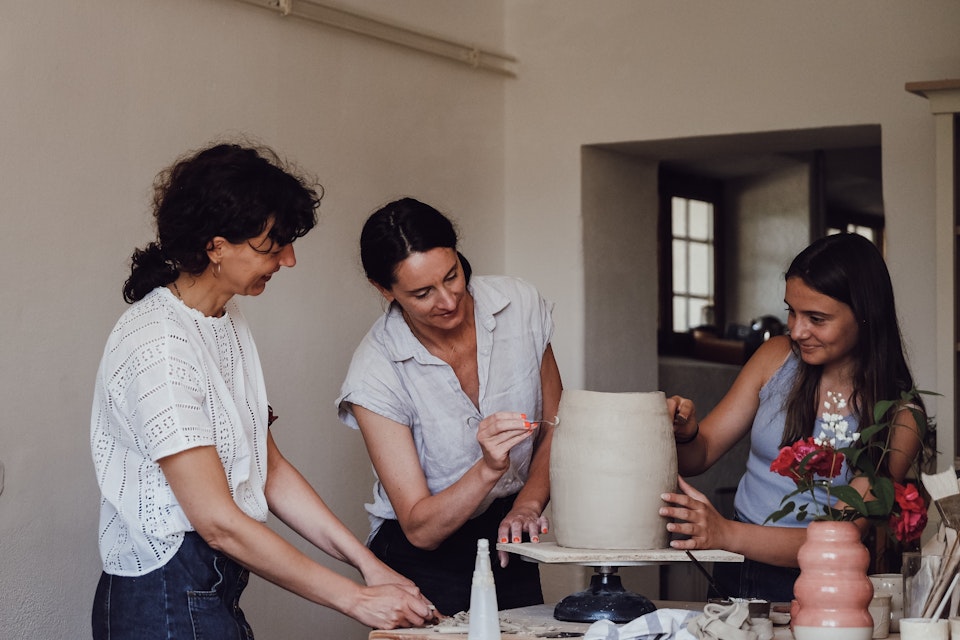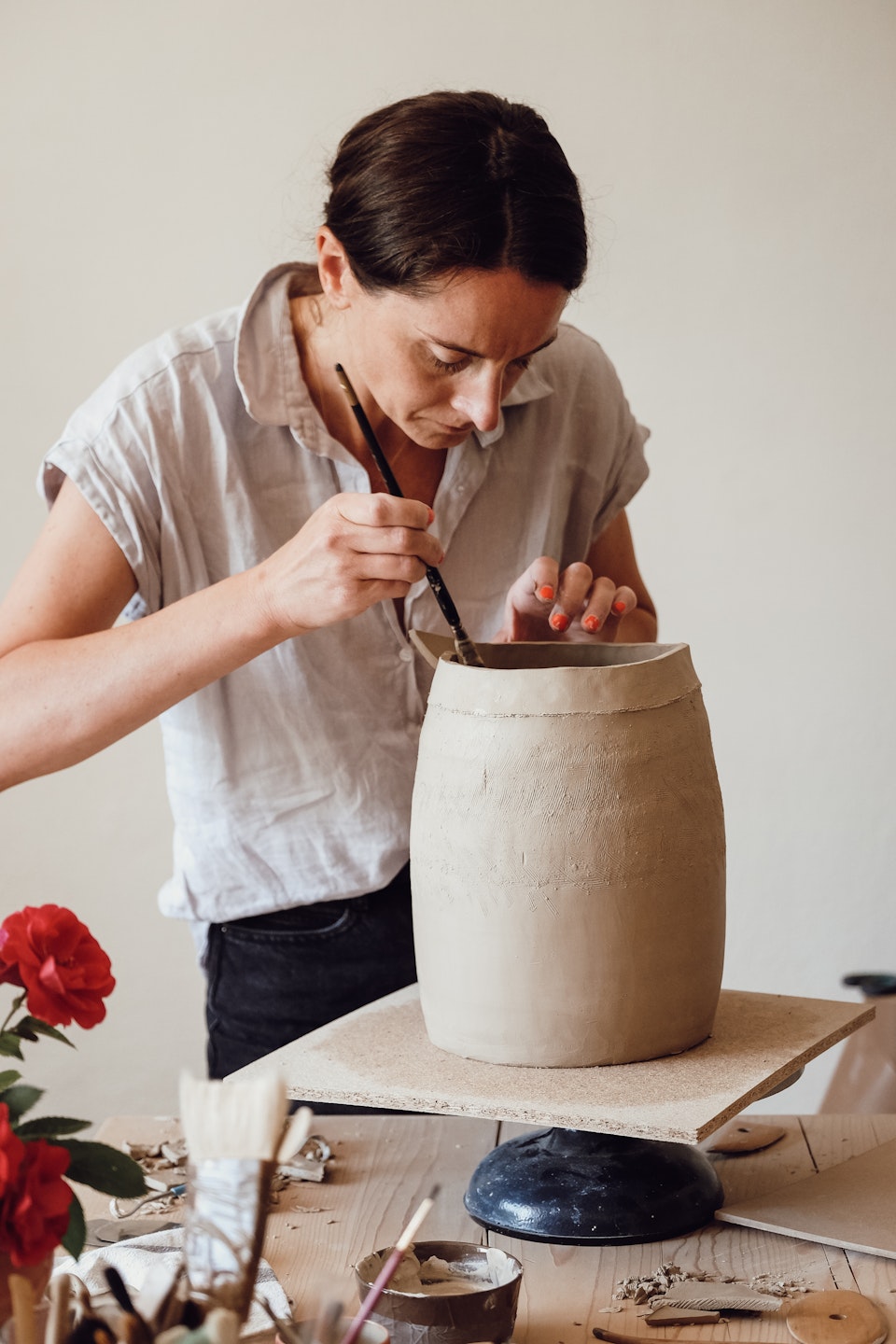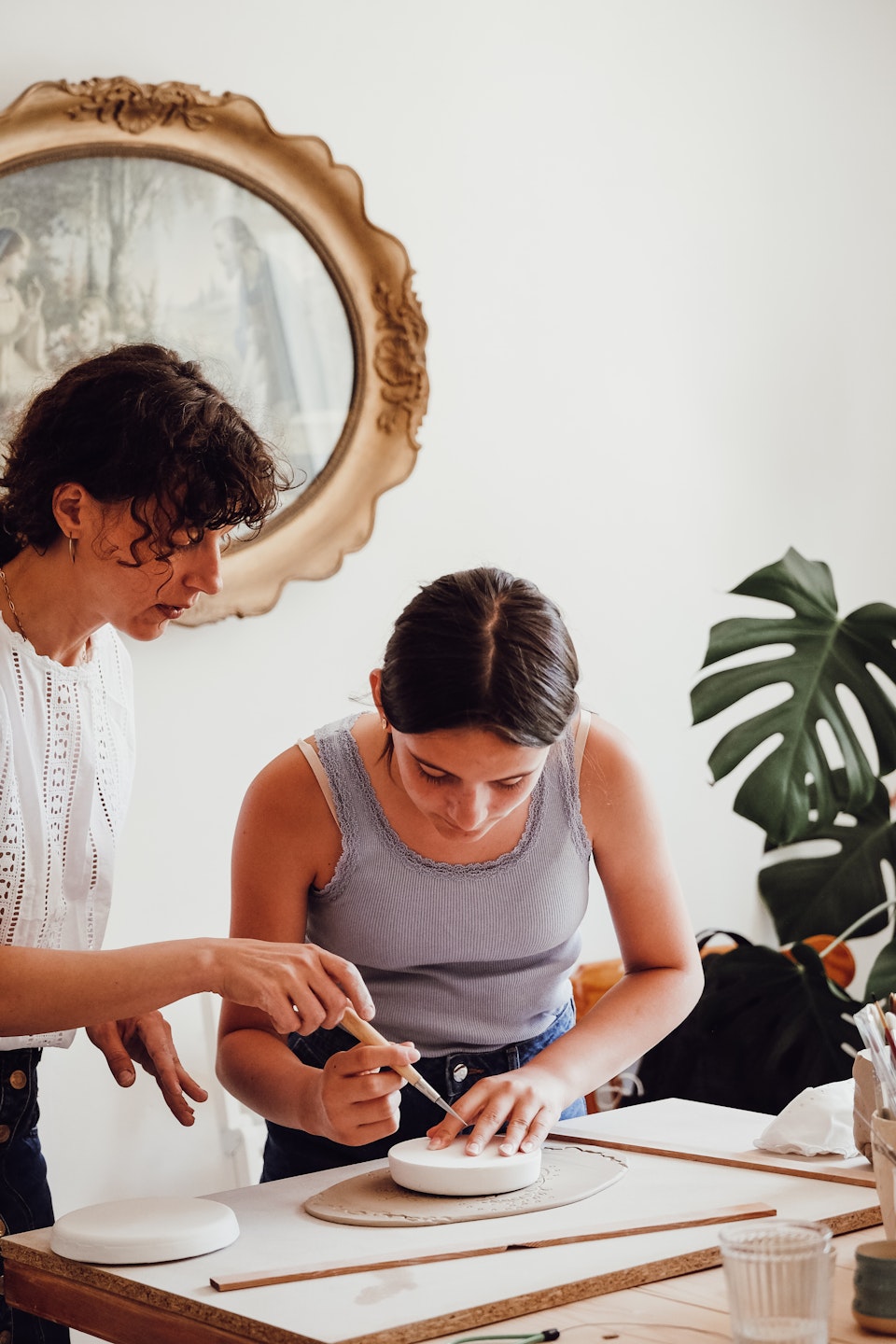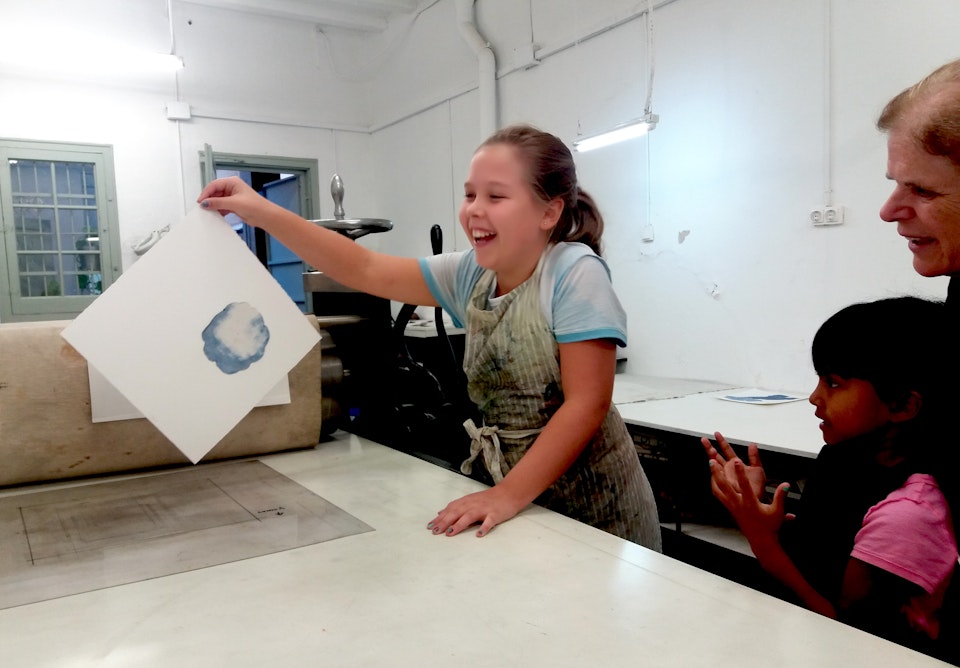April 22, 2024
How Families Cultivate an Art Education for Their Children with VAWAA
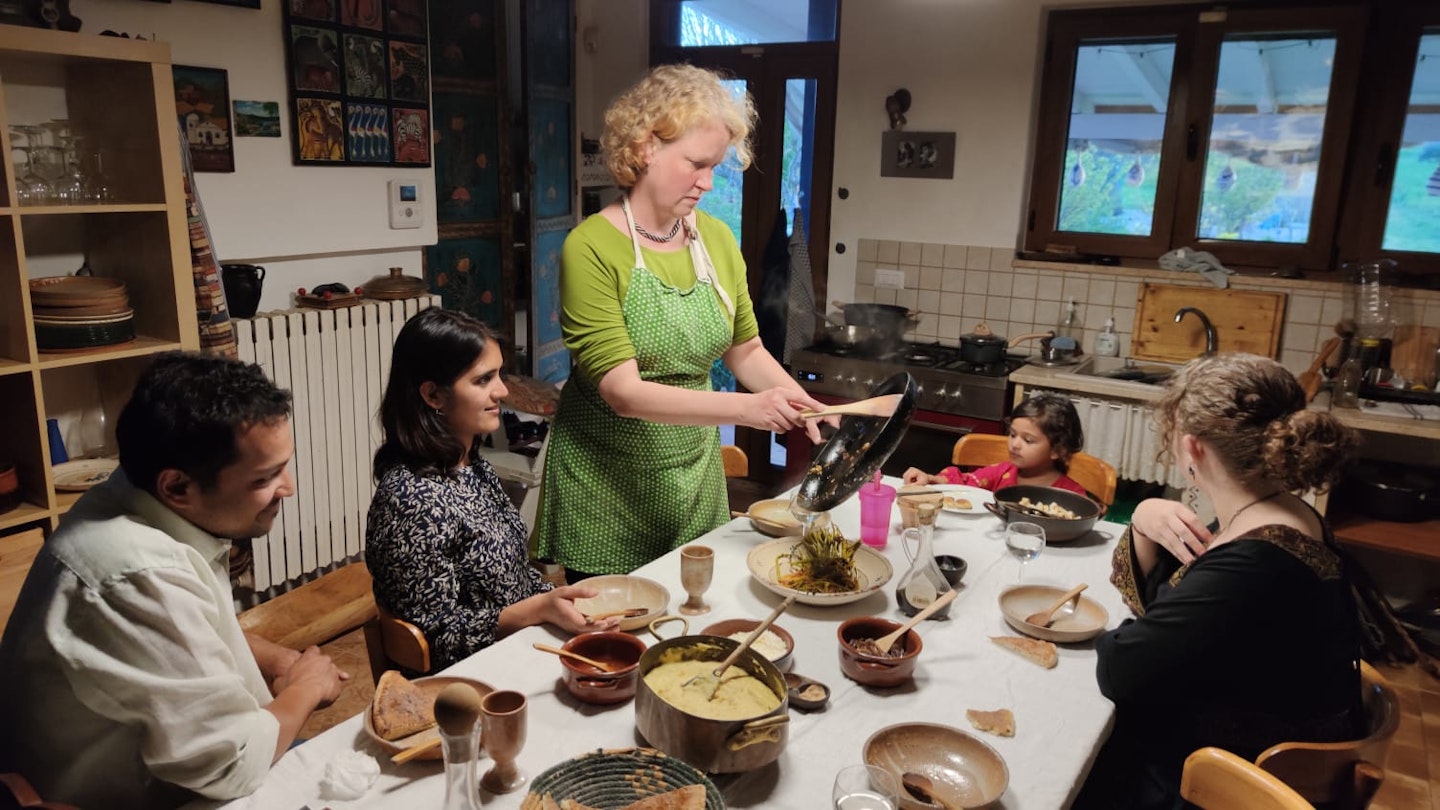
A brief (and fascinating) history lesson: in the 1990s, NASA’s interest in divergent thinking and creativity led them to carry out tests on 1,600 children between the ages of 4-5. What they didn’t expect to find was that 98% of the children were, in fact, creative geniuses. Continuing the study as the group aged, that number dwindled to 12% once they reached high school. When they conducted the study on a group of adults, only 2% showed an aptitude for creative genius.
High feats of genius aside, we know that nurturing creativity from a young age has innumerable benefits. Imagination is a powerful tool. When exercised, children are more empathic, their perspectives broader, and critical thinking skills tend to develop quickly. In particular, art education encourages new neural pathways to form in the brain. A creative mind is a connected one, better suited for problem-solving, collaboration, and innovation. No wonder NASA was so keen to find more creative thinkers.
Sadly, the lack of art education in mainstream schooling comes as no surprise. Creative divergent thinking doesn’t seem to fit with the goals of most institutions. They are preoccupied with standardized testing, leading to a narrowing curriculum and a mindset focused on right and wrong answers. Feeling the pressure to funnel as many students into reliable STEM career paths, artistic subjects fall to the wayside as non-essential. As a result, art funding is the first to be cut from school budgets, leading to a lack of qualified art teachers.
So how do we cultivate an active art education for younger generations? Thankfully, learning does not only happen within the confines of state education systems. It continues outside the walls of a classroom. My most formative learning experiences during my younger years happened on family vacations. Compacting valuable travel experience with arts education is a powerful way to stoke that creative flame.
Many of the artists on the VAWAA platform are more than happy to take on families of art apprentices, meaning young children can receive an exciting art education abroad, in the comfort of their parent’s company.
Here are three adventures in art education that have been formative for both parent and child.
An Italian Culinary Adventure That Strengthens Foundations
Craving an in-depth learning experience on sustainable cooking, Sonam’s family traveled from the United States to Puglia, Italy to learn from VAWAA artist Ursula. An archaeologist and culinary historian, Ursula’s traditional Trullo kitchen is a magical room where ancient recipes come to life. The surrounding farm is abundant in fruits and vegetables, not to mention a Mongolian yurt and a space for archery practice.
“Our 4-year-old daughter did not want to leave Ursula's farm, and I don't blame her,” Sonam shared after their VAWAA. An immersive arts education allows children to break out of the theoretical and use their hands, senses, and imagination. Instead of looking at a PowerPoint of different fruits, vegetables, and herbs, Sonam’s daughter picked them out of the ground herself—and sat at the kitchen table to learn to prepare them.
Guest Sonam's daughter delighting her senses and getting creative outdoors on family VAWAA with Ursula in Italy
Nowadays, there’s a growing awareness of the sensory needs of children, but these are difficult to safely meet in a classroom, let alone a kitchen. Learning directly from a master artist, Sonam’s daughter was able to have hands-on learning, experiencing the elements and handling plants and food herself; she was able to slow down and take in the entire sensory experience.
Ursula is a mother herself, so adjusting the culinary apprenticeship to suit the needs and temperament of a young child was not too difficult. “Ursula was so patient with our daughter and made sure she had age-appropriate, fun things to do throughout!”
The smallest person sits at the head of the table. Sonam's VAWAA with Ursula.
Growing and cooking food is possibly one of the most important skills we can learn in life, and sadly, it’s one that schools struggle to teach. I remember my younger brothers taking food tech in junior high school and being presented with a list of uninspiring recipes, the root histories and associated cultures of which were never shared.
In Ursula’s trullo, you receive not only cooking lessons for several sustainable feasts but also immersive history lessons. Presented to the mind of a child, this keeps them curious about where their food comes from, how it was made, and what kind of daily lifestyle it supports. If you ever visit Ursula, be sure to ask her how to make the delicious energy ball snack eaten by Roman gladiators!
Creating Deeper Parent-Child Connections Through Ceramics in Slovenia
As a family matures, vacations become more important. It’s an opportunity for working parents to bond with their increasingly independent children. But often, it can be hard to find opportunities to spend meaningful quality time together, something for all generations to enjoy and share. VAWAA apprentice Danielle chose to take her daughter to the fairytale town of Ljubljana to learn contemporary ceramics from VAWAA artist Katja.
“I wanted to find something special for my daughter and that got us out of our heads and into our hands,” Danielle reflected. “I love working with my hands...and I wanted to share this kind of experience with my daughter.” Katja’s practice includes both hand-building and throwing on a potter’s wheel. Her work is both functional and also playful. There’s plenty of room to explore and create whatever calls to you; making it a perfect introduction to ceramics.
Studio days are the best days. Danielle's VAWAA with Katja in Slovenia.
A true art education can be difficult to work into the traditional school routine, thanks to the days being so regimented. Of course, discipline is important, but artistic exploration needs space to flow freely—and we don’t all work at the same pace. In Katja’s studio, Danielle and her daughter “had the great fortune of spending 5 days creating, laughing, learning, and enjoying the art of ceramics.”
In this free-flowing creative environment, both parties get to enjoy personal exploration and independence, through a shared experience. Danielle could hone her ceramic skills on one project, while her daughter could experiment with her own clay vessels; expressing herself through whatever colors and shapes called to her.
Plenty of space for individual creative growth. Danielle's VAWAA with Katja in Slovenia.
As we grow, it’s natural to crave more personal freedom. That goes for both children and parents. But getting to see how and what our parents like to create means we get to learn about them as people, rather than just as our guardians. This type of intimacy strengthens relationships and enables more empathic communication going forward.
Accessing the Art World Through its Working Artists in Barcelona
Due to the rigor of state school conditioning, prioritizing art education can at first feel daunting. Free-flowing art sessions can initially seem somewhat divorced from real working life. And naturally, parents want to prepare their children for reality. What can be so compelling about a VAWAA art education is that children get first-hand experience of a working artist’s studio, out in the real world. For them, it’s not just a hobby—it’s a career.
When Jenn visited VAWAA printmaker Roser, with a group that included two girls aged 6 and 11, she was initially concerned that a week working in the studio would be too much for them. Looking at a printmaking press, it’s easy to see why adults may worry that it’s not the most accessible craft for children.
Turns out, they were more than capable of engaging with the process, thanks to master printer Roser’s ability to tailor the apprenticeship so they could “enjoy the experience as much as the adults did.” With such a detailed involvement with the art form during their formative years, these children won’t ever look at a printing press and feel intimidation, that pursuing this art form is out of their league. The experience and education are already under their belt, paving the way for them to return to this art later in life with confidence, should they wish.
It’s common for studios to host several working artists at once. In the bustling city of Barcelona, one rich with creatives, this tends to be the norm. Through intergenerational learning and getting to work with a peer, these children got to get a taste of that camaraderie and collaboration for themselves. This can be an invaluable experience to have, especially since standard education tends to foster a lot of competition. Instead of associating working alongside others with fear that you will not quite make the grade, they have a lived example that is completely free from that.
Trusting—and celebrating—the process! Jenn's VAWAA with Roser in Spain.
“We created two large, beautiful pieces and a ton of smaller pieces so we’ll all have something special to hang on our walls as a takeaway,” Jenn reflected.
Many of us look back at our childhoods with the rose-colored lens of nostalgia. It’s easy to forget that it was quite frustrating living with so many decisions being made for you. In these tumultuous times, I feel especially concerned for the children of today, who often have access to an array of information and opinions via technology. The world may seem bleak, and not feeling that you have much agency can make things especially daunting. Children deserve an art education because they deserve to exercise agency and will, to be given the tools to express themselves. An art education safely offers this freedom. Plus, it nurtures and protects their greatest power—ensuring a brighter future.
Written by Kat Odina Ali
Explore all mini-apprenticeships, and be sure to come say hey on Instagram. For more stories, tips, and new artist updates, subscribe here.
